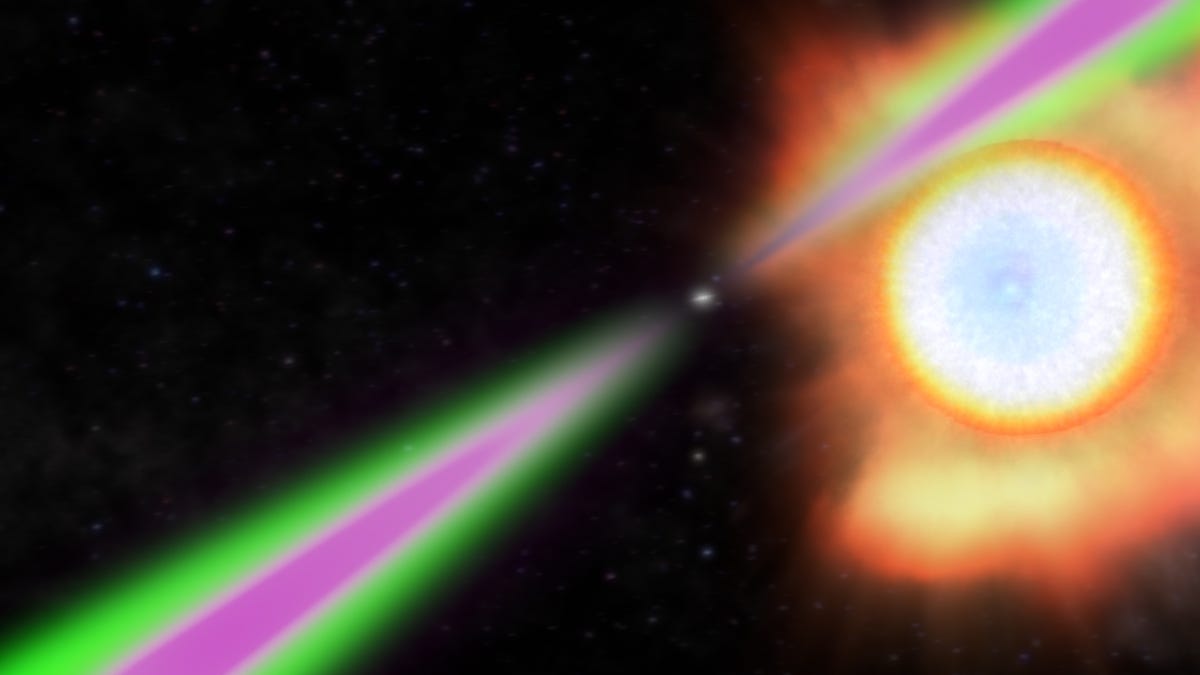A Black Widow Pulsar Became the Heaviest Neutron Star by Devouring Its Mate
Sometimes stars just gotta eat.

Illustration of a "black widow binary" consisting of a pulsar and companion star.
Some massive stars collapse into ultra-dense, rapidly spinning neutron stars called pulsars, which are some of the more powerful and fascinating objects in the cosmos, just behind black holes. But sometimes these monsters have companion stars that they can begin to consume, a phenomenon known as a black widow binary.
Now scientists believe they've found a record-breaking black widow neutron star that has consumed almost all of its partner star, making it the heaviest neutron star known so far.
University of California, Berkeley, astronomy professor Alex Filippenko is co-author of a paper published Tuesday in the Astrophysical Journal Letters on the parasitic pulsar pairing, and he says the evolution of the relationship is "absolutely fascinating. Double exclamation point."
"As the companion star evolves and starts becoming a red giant, material spills over to the neutron star, and that spins up the neutron star," Filippenko explained in a statement. "By spinning up, it now becomes incredibly energized, and a wind of particles starts coming out from the neutron star. That wind then hits the donor star and starts stripping material off, and over time, the donor star's mass decreases to that of a planet, and if even more time passes, it disappears altogether."
The pulsar is catalogued as PSR J0952-0607 and now takes the title of densest object visible from Earth. It is roughly the size of city, but with 2.35 times the mass of our sun, and spins at a dizzying rate of 707 times per second.
Besides just being an impressive object, the record-setting collapsed star could provide some insight into exactly where the line is between collapsing into a neutron star and something even more mysterious and powerful.
"We can keep looking for black widows and similar neutron stars that skate even closer to the black hole brink. But if we don't find any, it tightens the argument that 2.3 solar masses is the true limit, beyond which they become black holes," Filippenko said.
The team used the Keck telescope on Hawaii to observe the ravenous dense star, pushing it to its limits to make the observations. The next generation of giant telescopes now under construction could add even more detail to the profile of these bizarre and slightly terrifying objects.

